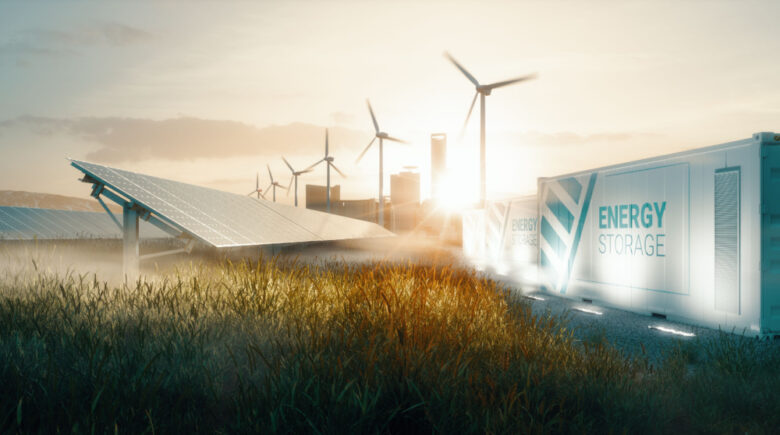The world is rapidly changing, and so is the way we produce and consume energy. In recent years, there has been a significant shift towards renewable energy, driven by the need to address the challenges of climate change and reduce our dependence on fossil fuels. This transition towards sustainability is essential not only for our planet’s health but also for humanity’s well-being. This article will explore the latest news on renewable energy and how it is reshaping the energy landscape.
Renewable energy is produced from natural resources replenished over time, such as sunlight, wind, rain, and geothermal heat. Unlike finite fossil fuels, which emit harmful greenhouse gases, renewable energy sources are clean, abundant, and have little to no environmental impact. Moreover, renewable energy is becoming increasingly cost-effective, making it an attractive option for businesses and households.
Solar energy is one of the most promising renewable energy sources. According to the International Energy Agency (IEA), solar energy is expected to be the largest source of electricity by 2035, surpassing all other renewables combined. In 2020, the world will have installed a record 135 GW of solar power, bringing the total installed capacity to over 760 GW. This growth is driven by falling costs, government incentives, and increased public awareness of the benefits of solar energy.
One of the latest developments in solar energy is the use of floating solar farms. These solar power plants are installed on water bodies such as lakes, reservoirs, and ponds. Floating solar farms have several advantages over land-based solar farms. They can be installed on water bodies that are not suitable for other uses, such as agriculture or housing, and they reduce evaporation, which is a significant problem in arid regions. Moreover, water’s cooling effect can increase solar panels’ efficiency, leading to higher energy yields.
Another promising renewable energy source is wind power. Wind turbines harness the power of the wind to generate electricity, and they are becoming increasingly common in many countries. According to the Global Wind Energy Council (GWEC), the world will install 93 GW of new wind power capacity in 2020, bringing the total installed capacity to over 743 GW. China is the world leader in wind power, followed by the United States, Germany, and India.
One of the latest trends in wind power is offshore wind farms. These wind farms are installed in the sea, often far from shore. Offshore wind farms have several advantages over land-based wind farms. They are not affected by the same wind patterns as on land, and they can generate more electricity due to the stronger and more consistent winds at sea. Moreover, offshore wind farms have little to no visual impact on the landscape, making them more acceptable to local communities.
Geothermal energy is another promising renewable energy source. Geothermal power plants use the earth’s heat to generate electricity, and they are becoming increasingly common in many countries. According to the International Geothermal Association (IGA), the world installed 609 MW of new geothermal power capacity in 2020, bringing the total installed capacity to over 14 GW. The United States is the world leader in geothermal power, followed by Indonesia, the Philippines, and Turkey.
One of the latest developments in geothermal energy is enhanced geothermal systems (EGS). EGS involves drilling deep into the earth’s crust and creating a network of fractures that can be used to circulate water or other fluids. This process can increase the temperature of the rock, leading to higher energy yields. EGS has the potential to unlock vast amounts of geothermal energy that are currently inaccessible.
Hydropower is another renewable energy source that has been used for centuries. Hydropower plants use the flow of water to generate electricity, and they are the largest source of renewable energy globally, accounting for around 16% of the world’s electricity production. Hydropower is attractive for many countries because it is reliable, flexible, and has low greenhouse gas emissions.
One of the latest developments in hydropower is the use of pumped-storage hydropower (PSH). PSH involves pumping water from a lower reservoir to a higher reservoir during periods of low electricity demand and then releasing the water to generate electricity during periods of high demand. PSH can provide a reliable and flexible source of electricity, allowing for the integration of variable renewable energy sources such as wind and solar power. Moreover, PSH can store excess energy during high renewable energy production and release it during low production, helping to balance the electricity grid and reduce the need for fossil fuel-based backup power.
In addition to these renewable energy sources, emerging technologies have the potential to revolutionize the energy landscape. One of these technologies is hydrogen. Hydrogen is a versatile and clean energy carrier that can be used for various applications, including transportation, heating, and electricity generation. Moreover, hydrogen can be produced from renewable energy sources such as wind and solar power, making it a key component of a sustainable energy system.
Another emerging technology is carbon capture, utilization, and storage (CCUS). CCUS involves capturing carbon dioxide emissions from power plants and industrial processes and using them for other applications or storing them underground. CCUS can help reduce greenhouse gas emissions from fossil fuel-based power generation and industrial processes, making them more sustainable.
In conclusion, renewable energy is reshaping the energy landscape, driven by the need to address the challenges of climate change and reduce our dependence on fossil fuels. Solar, wind, geothermal, hydropower, and emerging technologies such as hydrogen and CCUS are all part of a sustainable energy system that can provide reliable, clean, and affordable energy. While challenges are still to be overcome, such as intermittency, grid integration, and storage, the rapid growth of renewable energy and the latest technological developments provide hope for a more sustainable future. As individuals, communities, and nations, we all have a role in accelerating the transition toward renewable energy and building a more sustainable world for future generations.
The world is rapidly changing, and so is the way we produce and consume energy. In recent years, there has been a significant shift towards renewable energy, driven by the need to address the challenges of climate change and reduce our dependence on fossil fuels. This transition towards sustainability is essential not only for our planet’s health but also for humanity’s well-being. This article will explore the latest news on renewable energy and how it is reshaping the energy landscape.
Renewable energy is produced from natural resources replenished over time, such as sunlight, wind, rain, and geothermal heat. Unlike finite fossil fuels, which emit harmful greenhouse gases, renewable energy sources are clean, abundant, and have little to no environmental impact. Moreover, renewable energy is becoming increasingly cost-effective, making it an attractive option for businesses and households.
Solar energy is one of the most promising renewable energy sources. According to the International Energy Agency (IEA), solar energy is expected to be the largest source of electricity by 2035, surpassing all other renewables combined. In 2020, the world will have installed a record 135 GW of solar power, bringing the total installed capacity to over 760 GW. This growth is driven by falling costs, government incentives, and increased public awareness of the benefits of solar energy.
One of the latest developments in solar energy is the use of floating solar farms. These solar power plants are installed on water bodies such as lakes, reservoirs, and ponds. Floating solar farms have several advantages over land-based solar farms. They can be installed on water bodies that are not suitable for other uses, such as agriculture or housing, and they reduce evaporation, which is a significant problem in arid regions. Moreover, water’s cooling effect can increase solar panels’ efficiency, leading to higher energy yields.
Another promising renewable energy source is wind power. Wind turbines harness the power of the wind to generate electricity, and they are becoming increasingly common in many countries. According to the Global Wind Energy Council (GWEC), the world will install 93 GW of new wind power capacity in 2020, bringing the total installed capacity to over 743 GW. China is the world leader in wind power, followed by the United States, Germany, and India.
One of the latest trends in wind power is offshore wind farms. These wind farms are installed in the sea, often far from shore. Offshore wind farms have several advantages over land-based wind farms. They are not affected by the same wind patterns as on land, and they can generate more electricity due to the stronger and more consistent winds at sea. Moreover, offshore wind farms have little to no visual impact on the landscape, making them more acceptable to local communities.
Geothermal energy is another promising renewable energy source. Geothermal power plants use the earth’s heat to generate electricity, and they are becoming increasingly common in many countries. According to the International Geothermal Association (IGA), the world installed 609 MW of new geothermal power capacity in 2020, bringing the total installed capacity to over 14 GW. The United States is the world leader in geothermal power, followed by Indonesia, the Philippines, and Turkey.
One of the latest developments in geothermal energy is enhanced geothermal systems (EGS). EGS involves drilling deep into the earth’s crust and creating a network of fractures that can be used to circulate water or other fluids. This process can increase the temperature of the rock, leading to higher energy yields. EGS has the potential to unlock vast amounts of geothermal energy that are currently inaccessible.
Hydropower is another renewable energy source that has been used for centuries. Hydropower plants use the flow of water to generate electricity, and they are the largest source of renewable energy globally, accounting for around 16% of the world’s electricity production. Hydropower is attractive for many countries because it is reliable, flexible, and has low greenhouse gas emissions.
One of the latest developments in hydropower is the use of pumped-storage hydropower (PSH). PSH involves pumping water from a lower reservoir to a higher reservoir during periods of low electricity demand and then releasing the water to generate electricity during periods of high demand. PSH can provide a reliable and flexible source of electricity, allowing for the integration of variable renewable energy sources such as wind and solar power. Moreover, PSH can store excess energy during high renewable energy production and release it during low production, helping to balance the electricity grid and reduce the need for fossil fuel-based backup power.
In addition to these renewable energy sources, emerging technologies have the potential to revolutionize the energy landscape. One of these technologies is hydrogen. Hydrogen is a versatile and clean energy carrier that can be used for various applications, including transportation, heating, and electricity generation. Moreover, hydrogen can be produced from renewable energy sources such as wind and solar power, making it a key component of a sustainable energy system.
Another emerging technology is carbon capture, utilization, and storage (CCUS). CCUS involves capturing carbon dioxide emissions from power plants and industrial processes and using them for other applications or storing them underground. CCUS can help reduce greenhouse gas emissions from fossil fuel-based power generation and industrial processes, making them more sustainable.
In conclusion, renewable energy is reshaping the energy landscape, driven by the need to address the challenges of climate change and reduce our dependence on fossil fuels. Solar, wind, geothermal, hydropower, and emerging technologies such as hydrogen and CCUS are all part of a sustainable energy system that can provide reliable, clean, and affordable energy. While challenges are still to be overcome, such as intermittency, grid integration, and storage, the rapid growth of renewable energy and the latest technological developments provide hope for a more sustainable future. As individuals, communities, and nations, we all have a role in accelerating the transition toward renewable energy and building a more sustainable world for future generations.



